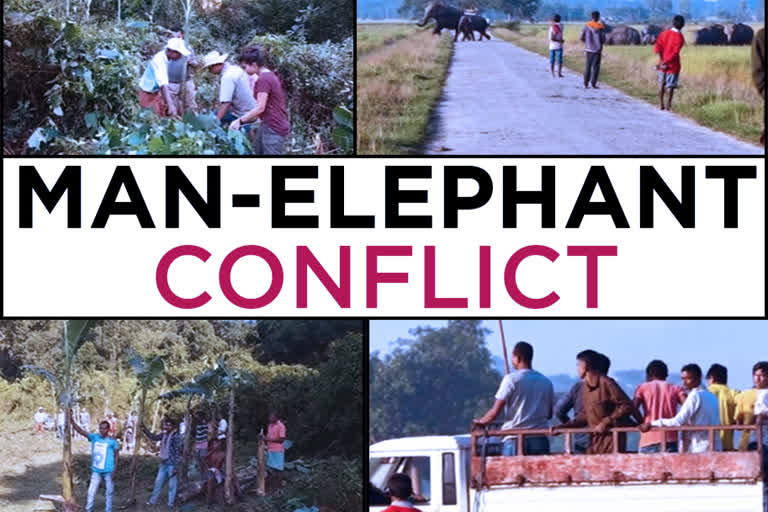Nagaon (Assam): The state of Assam has seen a spike in man-elephant conflicts since 2010, with the death toll amounting to 249 elephants and 761 humans.
The fight between elephants and men is due to the scarcity of food in the forest land of the state. Every year, the wild elephants come down the hills in search of food and water and destroy the paddy fields of the farmers of Assam's Nagaon district.
Located 110 km from the state's capital--Dispur, in Nagaon many wild elephants and people have died in the Man-Elephant conflict.
The herd of wild elephant ascending from Karbi Hillock to the plains of Nagaon has been severely damaging the paddy fields of the region.
According to sources, of the 249 elephant casualties, 92 died due to electrocution, 54 were mowed down by trains, 20 fell victim to poaching, 53 died in accidents and 30 were killed due to poisoning.
Previously, many measures were taken by villagers of Nagaon and nearby areas to mitigate man-elephant conflict, but nothing worked.
Aiming to reduce the Man-Elephant conflict, naturalist Binod Dulu Bora-- a local youth came up with the solution to avoid their crops being raided by elephants.
Bora along with the help of a cluster of villages donated 200 bighas (roughly 33 hectares) of community land to create a meal zone for elephants.
Even though the poor farmers did not have enough land to even feed their families, they still donated their land for elephants to get an adequate amount of food, the villagers grew paddy crops on the slope of Karbi Hillock for elephants.
Both naturalist Binod Bora and his wife are consistently working for the mitigation of Man-Elephant conflict.
Bora ensures that the food is available for the wild elephant in the hillock so that it does not need to come towards the plain.
